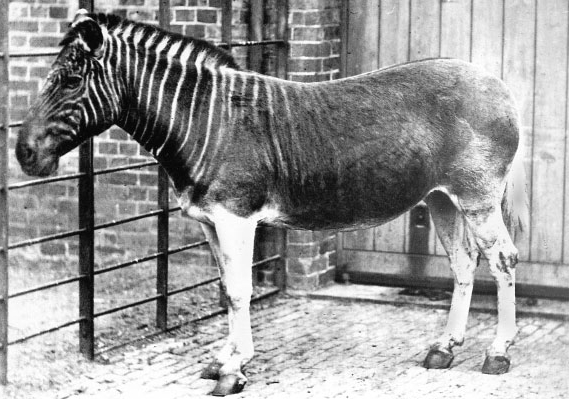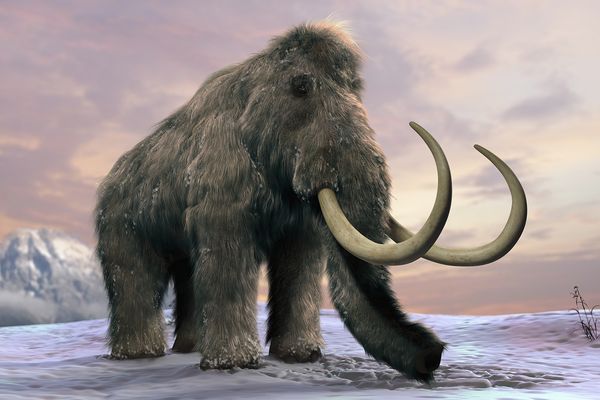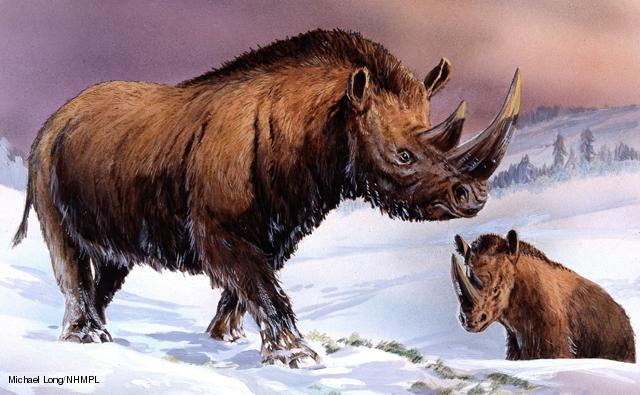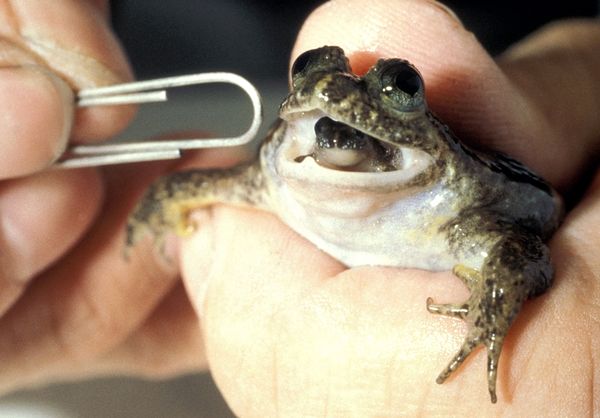https://ift.tt/1r5dJQZ
Environmental change, human errors and sheer recklessness have led to a number of recent extinctions. In fact, the maple tree in your yard may have once held passenger pigeons, and thylacine claw marks can still be found. With preserved DNA and genetic restoration technology, it’s now possible that some of these lost species may be resurrected. While ethical concerns about playing God have been raised, we played devil by eliminating these species in the first place, and restoring their role in nature may be a viable option.
10. Passenger Pigeon
Upon the arrival of European settlers in North America, the passenger pigeon was the most abundant bird species on Earth. Inhabiting the thick deciduous forests of Eastern North America, the stunning pink and blue bird migrated between feeding sites in such large flocks the sun was said to be blotted out by the living clouds. Disaster struck when market hunting decimated the flocks, and despite some attempts to legislate protection, the passenger pigeon dwindled until the last specimen, a captive, died in 1914.
With preserved DNA available from laboratory and museum specimens, a team project presented at the 2013 TedEx industrial conference aims to recreate the passenger pigeon through genetic sequencing, using the closely related band-tailed pigeon as a surrogate carrier. Regrowth of forests and hunting regulations offer a friendlier environment for the birds should they be brought back.
9. Quagga
The quagga, or “horse tiger,” was an equine mix of horse and zebra characteristics. Native to South Africa, the quagga went extinct following overhunting in the late 1800s. The brown color with limited frontal stripes suggest it was either the ancestor of the fully striped zebra, or a more recently developed descendant that was in the process of losing its stripes and returning to a horselike form. Due to the close relationship of this wild horse subspecies to the plains zebra, efforts have been made to re-evolve them through selective breeding. Incredibly, the work has met with a measure of success, and some scientists believe the quagga is already partially restored. Several animals with intermediated coloration have been released into parks.
8. New Zealand Huia
The mountain forests of New Zealand were once home to a mysterious and exceedingly unusual black songbird known as the huia. These wattlebirds exhibited a bizarre and unparalleled form of sexual dimorphism. Male huia would break open rotting logs with their short, stout bill, allowing the female to insert her long, scythe-like beak to extract grubs. Huia went extinct in the early 19th century as a result of forest loss and overhunting for museum specimens. If DNA of sufficient quality can be extracted from bones in museum specimens, the future possibility that this bird may be cloned remains. With all endangered species, it’s essential that conservation efforts are begun before a species is overly rare, when it becomes more famous but much harder to save.
7. Carolina Parakeet
The Carolina parakeet was the only parrot native to Canada and the United States. It’s also one of history’s most recent extinctions, and one of the most mysterious, tragic and ecologically damaging. Inhabiting the same forests as the passenger pigeon, the parrot was persecuted by landholders who disliked its fondness for fruit crops. Others shot them for feathers to adorn hats, and research suggests chicken viruses may have killed many of them off. The last one died in 1916 in captivity. Fortunately, preserved DNA from remaining specimens may allow the northern parrot to be restructured for its eventual release back into forests. The parrots have a vital role in dispersing fruit and nut tree seeds, and would likely restore habitat for other birds.
6. Auroch
When we look at a domestic cow, drink milk, or eat beef, we likely never realized that we’re benefiting from an extinct species. While buffalo, bison and yak hold on, and in some cases thrive in wild populations, the auroch, or wild cow, is now extinct.
Once ranging across Eurasia, numerous individuals were domesticated and selectively bred into different strains of cattle, while hunting and land use change left no individuals remaining in the wild. Coupled with the changes of domestication, the auroch was lost. As the domestic subspecies, cows thrive worldwide, and an approach based on back-crossing and selective breeding for ancestral traits is proposed as the way to restore this species. Release of aurochs into Europe’s forests would increase wildlife habitat and forest health benefits that have been lost until now.
5. Woolly Mammoth
Unlike more recent extinctions, the woolly mammoth remains a mystery. Suitable habitats remain in Siberian tundra regions, where the bodies of mammoths are still being found preserved in the permafrost. The conditions that preserved the bodies have also preserved the DNA sequences of this giant mammal rather effectively, giving scientists the opportunity to clone mammoths using their closest living relative, the Asian elephant.
It’s suspected that overhunting may have wiped out the woolly mammoth, rather than simple environmental change. The muskox possesses a similar woolly coat, and exists very well in the arctic tundra to this day. As a smaller animal with faster reproductive rates, they were likely better able to withstand hunting pressures.
4. Woolly Rhinoceros
Nature is full of ecologically associated species. Just as African grasslands and Asian rainforests are home to both elephant and rhinoceros species, the Woolly mammoth shared its tundra habitat with the enormous woolly rhinoceros. Measuring as large as a medium sized truck, this shaggy giant uprooted plants and defended its territory with an unusually long horn, and was extremely well known to ancient tribes. Pictures of woolly rhinoceros have appeared in cave paintings in France, suggesting it was often hunted, perhaps excessively. The same conditions allowing mammoth DNA to be preserved have also provided genetically viable woolly rhinoceros carcasses. There are proposals to resurrect both species to create a restored “Pleistocene national park” nature reserve for both species.
3. Pyrenean Ibex
The extinction of the Pyrenean ibex in the Mediterranean mountains was one of the most senseless extinctions, and considering it occurred in the year 2000, one of the most recent. However, that recentness collided with the development of cloning technology, allowing this species to become living proof that extinct species can be resurrected through genetic restoration procedures.
In 2003, a live Pyrenean ibex was born and lived briefly before dying of lung failure, an unfortunate defect that could likely be avoided in future breeding. Although this was a setback, it’s amazing that the animal was recreated and only one major physiological problem occurred. With just a few refinements and restoration of project funding, this wild relative of Dolly the sheep could become the first recreated mammal. There are challenges in reintroducing species, thanks to the need to introduce culture, learned behavior and social structures.
2. Gastric Brooding Frog
In the late 20th century, a plague of exotic spores known as chytrid fungus spread as a result of the accidental release of non-native toads into Australia. The disease hit numerous amphibian populations hard, and led to the sudden extinction of Northern Australia’s gastric brooding frog in 1983. Using specimens preserved in freezers since 1970, a team of conservation geneticists from the University of New South Wales recently succeeded in replacing tree frog embryos with genetic material from the gastric brooder. Although the embryos only lived a few days, this freak of nature known for hatching its eggs by swallowing them is close to becoming the first ever animal to be genetically restored. Were the species to come back, root causes such as habitat degradation must be addressed.
1. Giant Ground Sloth
Huge, slow moving and exceedingly unusual, the giant ground sloth inhabited the New World until about 10,000 years ago. The enormous relative of the familiar tree sloth walked in a quadrupedal manner, but often reared up on their massive hind limbs to forage on tree leaves. Weighing up to four tons and reaching 20 feet in length, giant sloths are only surpassed by modern elephants in size, and they played an essential role in breaking up continuous forest tracts and allowing birds and small mammals to access newly created habitat edges.
In one of the stranger twists of genetic resurrection, scientists have indicated that preserved fossil dung from the huge animals may contain sufficient DNA information to reconstruct their genome and return them to the forest ecosystems they once presided over. The key challenge would be finding a suitable surrogate parent for this large species.
Being able to resurrect animals is cool, but it's no substitute for preventing extinction in the first place.
Read about
10 rare animalsthat are facing extinction, or remind yourself that plant species can be endangered too with our
list of endangered trees.AMAZING
TRENDS,AMAZING
via Toptenz.net http://www.toptenz.net
May 14, 2018 at 06:33AM
.png)











No comments:
Post a Comment